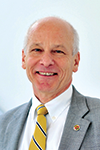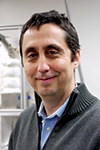Press Release
Fire Protection Experts Available to the Media
Members of the press are invited to connect with fire protection engineers at Maryland's A. James Clark School of Engineering.
FOR IMMEDIATE RELEASE June 22, 2021
CONTACT:
Melissa L. Andreychek
(301) 405-0292
mandreyc@umd.edu
College Park. Md — The 2021 wildfire season is far from over, but engineers could help.
Combustion and fire safety engineers work alongside fire ecologists, atmospheric scientists, and even architects and developers to identify risks and to design solutions to prevent, control, and mitigate the effects of wildfires on life and property.
Members of the media are invited to connect directly with fire protection experts at the University of Maryland’s A. James Clark School of Engineering for your stories; details for each are provided below.
|
Milke’s areas of expertise involve building and community evacuations, fire detection and fire protection systems, and smoke management. Current projects include a review for the Fire Protection Research Foundation of residents’ decision making to evacuate or defend their homes threatened by wildfires and the time needed to initiate their evacuation. Another ongoing effort involves a collaboration with the non-profit Kindling Safety to address the correlation between fire risk and socioeconomic factors. Poor and marginalized people are often exposed to significant fire hazards at their homes and at their places of work; globally, 1.6 billion people live in inadequate shelter, many in informal settlements (e.g., ad hoc communities created by low-income families and migrant workers), where a single fire can displace up to 15,000 people. This collaboration will provide the research, guidance, and resources needed to support practical decision making in high-need contexts like informal settlements and workplaces in the developing world. |
|
Stoliarov’s areas of expertise include flame structure and spread, pyrolysis (decomposition brought about by high temperatures) and smoldering mechanisms, and fire suppression. Stoliarov leads a project to identify why certain materials and structural components are more likely than others to be ignited by embers. The research team is developing a computational model that can describe this ignition process for various firebrand exposure conditions to various materials within the wildland–urban interface. The project is part of a broader National Institute of Standards and Technology effort to better understand how fire, earthquakes, and wind affect the built environment to inform building designs, codes, and standards to help those structures better withstand such hazards. |
|
Sunderland’s areas of expertise include combustion and fire safety, microgravity combustion, battery and vehicle fires, and diagnostics development. Sunderland leads one and co-investigators two other experiments aboard the International Space Station (ISS): a burning rate emulator, how to design flames to reduce or eliminate the formation of soot, and eerie-blue “cool flames” that could one day improve the design of combustion engines. Because many processes that affect the behavior of systems on Earth (such as thermal convection, sedimentation, and buoyancy) are absent in microgravity, the unique microgravity environment on the ISS has many benefits for the study of combustion and thermal transport phenomena; the elimination of these variables allows phenomena of interest to be studied without gravitational interference. |
|
Trouvé’s areas of expertise involve computational approaches to fire safety, including physics-based modeling and simulation of fire dynamics at flame scale, and data-driven forecasting of wildfire dynamics at regional scale. Current projects include a USDA/Forest Service-funded effort to develop a reduced-order computational model to simulate flame spread in the wildland under various vegetation, meteorological, and topographic conditions. Projects also include a National Science Foundation-funded effort to extend the modeling capabilities of current wildfire spread models beyond the case of spread in the wildland to the case of spread from the wildland into an urban area (known as wildland-urban interface fires) and spread across an urban area. The model could be used as a community-level risk assessment tool for pre-event planning, targeted recommendations for fire risk reduction, and real-time fire simulations for incident response, including evacuation and firefighting activities. |
 Jim Milke, Ph.D.,
Jim Milke, Ph.D.,  Stanislav Stoliarov, Ph.D.,
Stanislav Stoliarov, Ph.D.,  Peter Sunderland, Ph.D.,
Peter Sunderland, Ph.D.,  Arnaud Trouvé, Ph.D.,
Arnaud Trouvé, Ph.D.,